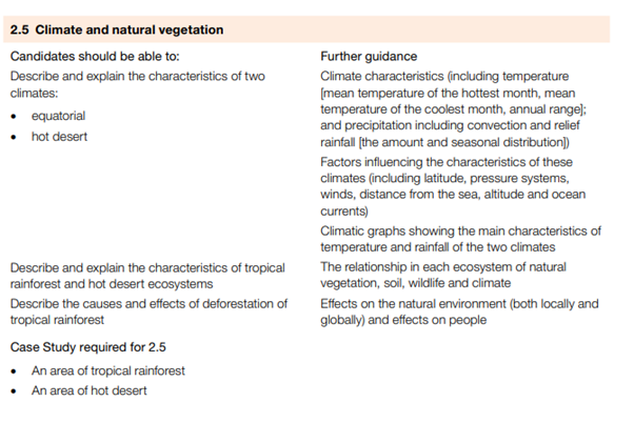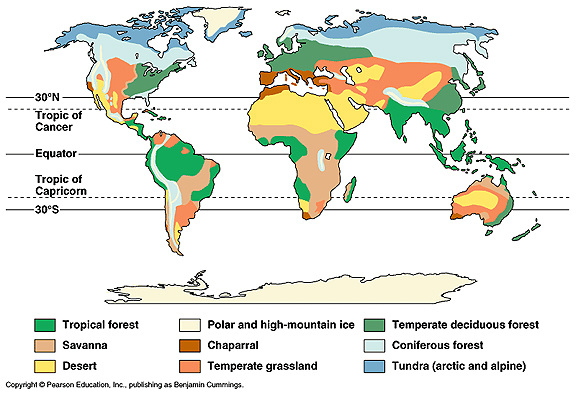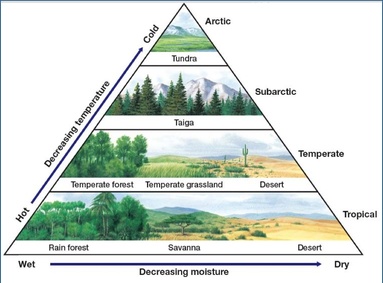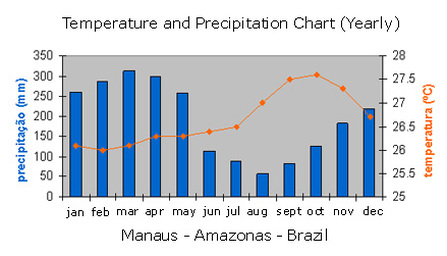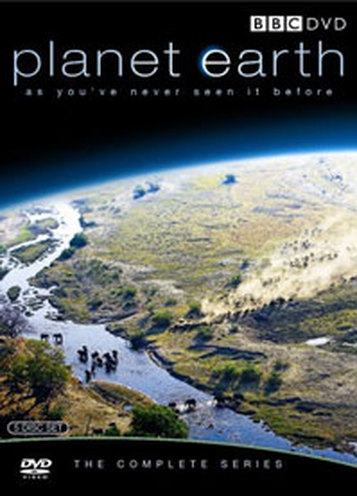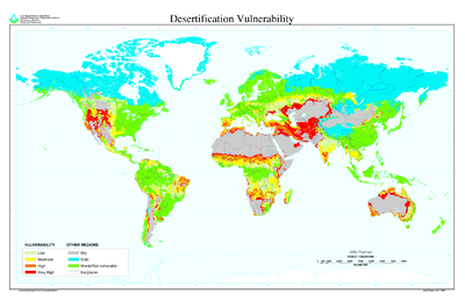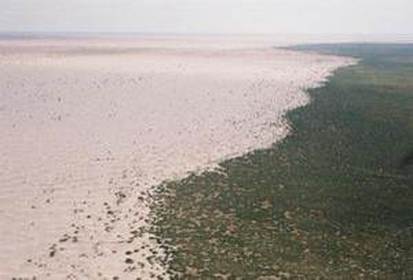What Are Biomes & Where Are They Located?

Objective: To understand what a biome is, how it differs from an ecosystem and how biomes functions, and their global spatial distribution.
The world is made up of many different biomes. Biomes are large regions of the world with similar plants, animals, and other living organisms that are adapted to the climate and other conditions.
There are many different classifications of biomes (Tundra, Taiga, Temperate, Chaparral Grasslands), but we will be focusing on two major terrestrial (land) ones:
1) Tropical Rainforest
2) Tropical Desert
A biome is made of many similar ecosystems. Ecosystems are the interactions between the living things and the nonliving things in one location. In an ecosystem, the plants, animals, and other organisms rely on each other and on the physical environment – the soil, water, and nutrients, for example. An ecosystem is often much smaller than a biome, although the size varies. At any given time, ecosystems may get out of balance and will adapt/change (think about the impacts of global warming on the Tundra)
Within each biome, the living organisms have adaptations to help them survive in these sometimes extreme environments. For example, a rabbit in the tundra may have larger feet to hop on the snow and white fur to hide from its potential predators. The unique climate and living conditions of each biome create wide variety on our planet.
You can complete the following tasks on the worksheet on the blue tab below.
Task 1 - Write out your own definition of a biome and find a suitable image that represents it.
Task 2 - What is the difference between a biome and an ecosystem?
Task 3 - Using a copy of both of the images above (click on each to make them larger), complete the following two activities:
i. Describe the global distribution of both Desert and Tropical Forest biomes and name three countries in three different continents that host each (that's six in total).
ii. Explain the relationship between temperature & moisture and vegetation generally. How does this apply to both focus biomes?
Task 4
Click here to be taken directly to geographyalltheway. Complete 'Why are biomes located where they are' worksheet below.
The Tropical Rainforest
|
Objective: To find out how location & climate of tropical rainforests are interlinked and to study the biodiversity within.
Starter: Watch the video about the Lyre bird in Australia to the right. How has this bird adapted to its climate and surroundings? You should use the worksheet to the right to complete the tasks below. Task 1 - Introducing Manaus. Using the Google Map embedded to the right, write down a detailed location (site & situation) of the city of Manaus. Task 2 - Study the climate graph of Manaus below. You can click to enlarge it. Complete the following questions based on the graph: Which is the hottest month? What is the mean temperature of the hottest month? Which is the coolest month? What is the mean temperature of the coolest month? What is the annual temperature range? Which is the wettest month? How much rainfall does the wettest month receive? Which is the driest month? How much rainfall does the driest month receive? How many seasons are there in Manaus? |
|
Tropical Rainforest Biodiversity - Video Task
|
Objective: To examine the relationships that exists within a tropical rainforest biome
Resources: To complete this unit of work, you will need the following:
Task 1 - Complete the worksheet above and the 3 and 4 mark review questions at the bottom of the geographyalltheway webpage Task 2 - Vegetation and plant adaptation in the tropical rainforest. Complete the worksheet below: |
Deforestation In The Brazilian Rainforest
|
Starter - watch the video to the right. It was created by a Geography student but gives you a five minute overview of the issues surrounding rainforest deforestation.
Check out this map. Green areas are forested; pink is suffered forest loss; blue showed forest gain. Complete the following activities on the worksheet below. The resources required to answer the question are listed beneath the map. |
|
|
What's the story in Brazil today? Watch the 2023 video to the right and then complete the first few activities on the worksheet above. Sustainable Rainforest Use Watch the 'Hidden Consequences' YouTube video to the right. i. Around the screenshot on the worksheet, annotate the hidden consequences of everyday rainforest use by people around the world. Target = 100 words. ii. Is this video an effective way of getting the message across? Watch the second video 'Follow the Frog' Around the screenshot on the worksheet, annotate the key message. Target is 50 words. |
|
Tropical Deserts
|
Objective: To find out how location & climate of tropical deserts are interlinked and to study the biodiversity within.
Starter: How do camels adapt to their desert environment? Check out (the very special) video to the right. Fill in this sheet (when you recover from the music) Why do deserts form and why? Task 1 - Open the worksheet by clicking on the tab above. Complete the activities set out using the videos to the right to help you. a. Use the David Attenborough video to annotate your globe on page 1 b. Use this image to help you annotate global locations of major deserts onto your worksheet. c. Use the image on page three to help you to explain why the Atacama desert is so dry. d. Use the climate graph to describe the climate of part of the Sahara desert region. e. Use the 'cactus & camel adaptations' video to the right to help you to annotate your cactus to show how it has adapted to living in such a dry environment. Task 2 - Use this climate graph outline and the Google Map embedded below to describe the site & situation of the town of Timbuktu. Task 3 - You have already had practice of completing a climate graph for Toulouse & Belem. 12 Blue Bars = monthly precipitation in MM Red line = average temperature in °C Click here to access the climate data for Timbuktu. Construct your climate graph working out the average temperature from the table. Use the 'Daily Mean Temperature' and 'Average Rainfall mm' data. Task 4 - Question Time: What is the hottest month? What is the mean temperature of the hottest month? What is the coolest month? What is the mean temperature of the coolest month? What is the annual temperature range? What is the wettest month? How much rainfall does the wettest month receive? What is the driest month? How much rainfall does the driest month receive? |
|
Tsunami Of Sand - Desertification
Objective: To understand how deserts spread, the causes and the implications on vulnerable populations.
Click on the tab below to access the worksheet on desertification.
What is desertification and how is it caused?
Task - You will need to download and complete the worksheet below.
The resources that you need are in this section. You will need the first YouTube video below ( for page 1-3) and you will also need this link to coolgeography for activities on page 2 of the worksheet.
Click on the tab below to access the worksheet on desertification.
What is desertification and how is it caused?
Task - You will need to download and complete the worksheet below.
The resources that you need are in this section. You will need the first YouTube video below ( for page 1-3) and you will also need this link to coolgeography for activities on page 2 of the worksheet.
Combating Desertification
You will need the second and third video below and the link to coolgeography above.
|
|
|
|
You have finished Theme 2!

